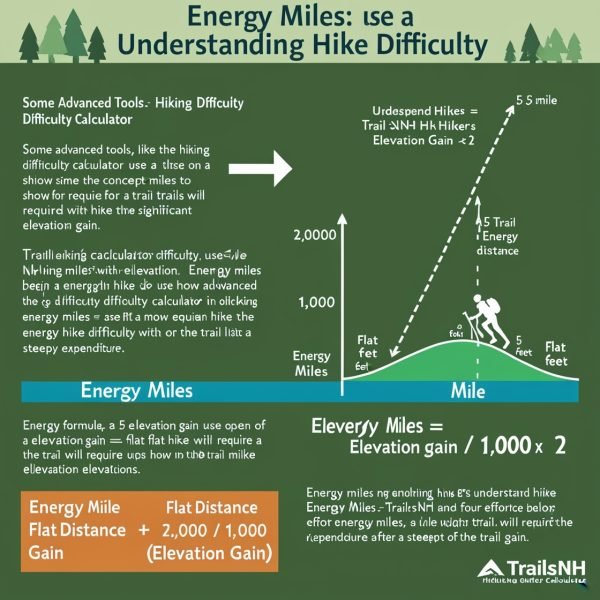How Many Feet per Mile Is Considered Steep Hiking
Hiking is an excellent way to experience nature, improve your health, and take in the stunning scenery. It can be difficult to determine how challenging a hike is, though, particularly when trying to define what a “steep” trail is. You’re not the only person who has ever pondered, “How many feet per mile is considered steep hiking?” We’ll dissect the different aspects of trail difficulty in this article, such as the connection between ascending and steepness and how to determine if a trek is too strenuous for your level of fitness.

Table of Contents
ToggleUnderstanding Trail Difficulty
Learning how hiking difficulty is usually determined is crucial before getting into the technicalities of feet per mile. Elevation gain, path length, terrain, and general trail conditions are some of the key factors that determine difficulty.
Key Elements That Determine Hiking Difficulty:
- Elevation Gain – The total elevation that you gain on the hike.
- Mileage – The distance of the hike when measured horizontally.
- Route Type – The form and design of the trail (out-and-back, loop, etc.).
- Trail Conditions – The state of the trail rocky, muddy, or smooth affects how difficult the hike feels.
These factors come together to determine the hike’s overall difficulty level. The amount of elevation gain per mile can make a short, steep climb as difficult as a lengthy, gradual rise.
What Does "Steep" Really Mean?
“Steep” describes hiking pathways that have a considerable elevation gain over a small horizontal distance. This increases the trail’s physical demands, particularly for hikers who are not experienced. However, what is the definition of steepness and how is it measured ?

Feet per Mile: The Key to Steepness
Measuring elevation increase per mile is the most often used yardstick to determine the steepness of a climb. This basically tells you how many feet you climb for each mile of trail.
General Classification of Steepness:
- Moderate: 500 to 800 feet per mile
- Steep: 800 to 1,000 feet per mile
- Very Steep: 1,000 to 2,000 feet per mile
- Extreme: Over 2,000 feet per mile
Every one of these categories relates to a distinct degree of difficulty; hence, understanding where a trek sits on this scale will enable you to determine whether it is within your capacity.

What Does 1,000 Feet per Mile Mean?
For people in good physical form, a trek with 1,000 feet of elevation gain per mile, for instance, will probably have moderate to challenging terrain where the gradient is evident but not overwhelming. Despite a little total elevation increase, the intensity of the climb makes a 1,000-foot-per-mile ascent seem far steeper than a level track.
Factors That Affect Steepness Perception
Although the feet-per- mile statistic is useful, elevation rise does not define a trail’s difficulty. Other elements can greatly affect how difficult or steep a climb feels:

Trail Surface and Conditions:
- Rocky or uneven terrain makes for a steeper trail.
- Mud, snow, or ice can slow your pace for even moderate hikes
- Switchbacks or winding trails may reduce the direct steepness but increase the overall distance, making the climb less direct but still challenging.

Hiker Fitness:
- For someone who is new to hiking, a 500 feet per mile hike may be quite strenuous, while a very experienced hiker may find it very easy.
- With steep climbs, not only are cardiovascular endurance and leg strength important, but managing steep climbs with momentum is key.

Altitude:
- Higher altitudes mean less air, which can render even moderate ascents feeling steeper.
- A 1,000-foot-per-mile hike at 10,000 feet elevation will therefore feel much more strenuous than hiking the same hike at sea level.

Weather:
- The heat or cold can accentuate the perceived steepness of a hike. Dehydration, for example, can cause sluggishness that can make a relatively moderate trail feel like grueling work.

Understanding Hiking Difficulty Ratings
Usually based on several criteria, including elevation gain per mile, the hiking community rates path difficulty:
- Easy: Flat trails with little elevation gain.
- Easy/Moderate: Less than 500 feet of elevation gain per mile. Suitable for most walkers.
- Moderate: 500–800 feet per mile of elevation gain. Can be rocky sections or gradual inclines.
- Difficult: Steep sections, rough, difficult trails — generally physically demanding
- Strenuous: Steep inclines, rock scrambling or difficult footing, often more than 800 feet of elevation gain per mile.
- Extreme: Very difficult hikes that often require technical skills as well as tremendous elevation gain in short distances (from 1,000 feet per mile and up).
These classifications help hikers identify trails that will fit their fitness levels and expectations.

Using Technology to Assess Steepness
Before you start a trail, modern hiking apps like AllTrails and Gaia GPS let you easily evaluate its degree of steepness. These instruments enable you to determine the feet per mile by showing elevation profiles including the average gradient, total elevation gain, and help in calculations.

Energy Miles: Understanding Hike Difficulty
Some more sophisticated tools, including the TrailsNH Hiking Difficulty Calculator, employ a concept known as energy miles to reflect the workload of a trail with a hefty elevation gain. The basic formula is:
- Energy Miles = Flat Distance + (Elevation Gain / 1,000) × 2
For terms of energy consumption, a 5-mile trek with 2,000 feet of elevation rise would equal a 9-mile flat hike. This method lets hikers know, depending on the steepness of a trail, how much work it will demand.

Real-World Illustrations of Steep RoadsHere are some paths with varying elevation gain values to help you to get a better perspective:
- Blanca Lake (Washington): 7 miles, 3,372 feet of elevation gain (963 feet per mile) — strenuous
- Mirror Lake via Tom, Dick, and Harry Mtn (Oregon): 8.3 miles, 1454 feet of elevation gain (350 feet per mile) — Moderate
- Jenny Lake Loop (Wyoming): 7.9 miles, 623 feet of gain (78 feet/mile) — Easy/Moderate
These examples show how elevation gain affects trail difficulty, with steeper trails requiring more effort and fitness.

How to Prepare for Steep Hiking Trails
- Know Your Limits: Pick your hikes according to your own fitness level and previous experience.
- Train for Steep Terrain: If you’re a rookie hiker, begin with moderate hikes and build your way up. Add hill climbs into your usual workout to help build strength and stamina.
- Pack Smart: Make sure you have trekking poles, comfortable shoes, enough water and clothing to prepare for potential temperature shifts.
- Rest and Hydrate: Don’t overdo it. Avoid fatigue by taking breaks and drinking plenty of water.
- Consult Trail Reviews: Turn to apps and online resources to consult reviews and look at detailed elevation profiles of trails before you hit the road.

Conclusion
Choosing the correct paths and getting ready appropriately depend on an awareness of how many feet per mile constitute difficult climbing. Knowing what to expect will make all the difference in your hiking experience whether your trail is 500 feet-per- mile moderate or strenuous with over 2,000 feet of elevation gain per mile. Any walk, no matter how steep it seems, you can boldly tackle using tools, evaluating your degree of fitness, and applying appropriate preparatory techniques. if you need more information about hiking, so please visit our website and other hiking articles.

